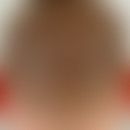Synonym(s)
DefinitionThis section has been translated automatically.
Half-lifeThis section has been translated automatically.
You might also be interested in
IndicationThis section has been translated automatically.
Malignant melanoma, bronchial carcinoma, myeloproliferative diseases, especially polycythemia vera
Dosage and method of useThis section has been translated automatically.
Undesirable effectsThis section has been translated automatically.
Fever (usually occurring within the first few weeks after the start of the first therapy cycle, rapidly decreasing after the last application).
Disorders of hematopoiesis, effluvium and alopecia, xerosis of the skin, atrophy of the skin, hyperpigmentation of integument and nails(melanonychia), non-specific dermatitis, stomatitis, fatigue, gastrointestinal disorders, chills, increase in transaminases, disorders of renal function.
With years of therapy (e.g. polycythemia vera) chronic dermatitic changes in hands and feet can occur, sometimes with scleroderma-like sclerosis as well as dermatomyositis-like skin changes. Further formation of actinic keratoses and squamous cell carcinomas.
Therapy-resistant ulcers of the skin (see skin ulcer) and mucous membranes; oral squamous cell carcinomas.
ContraindicationThis section has been translated automatically.
PreparationsThis section has been translated automatically.
LiteratureThis section has been translated automatically.
- De Benedittis M et al (2004) Oral squamous cell carcinoma during long-term treatment with hydroxyurea. Clin Exp Dermatol 29: 605-607
- Boneberger S et al (2010) Ulcerations under therapy with hydroxyurea. Dermatologist 61: 698-602
- Friedrich S et al (2004) Cutaneous ulcerations on hands and heels secondary to long-term hydroxyurea treatment. Eur J Dermatol 14: 343-346
- Geraminejad PA et al (2004) Chronic penile ulceration in a 72-year-old man. Arch Dermatol 140: 877-882
- Hansel G et al (2016) Cutaneous side effects under hydroxycarbamide therapy. Act Dermatol 42: 271-272
- Nofal A et al (2012) Hydroxyurea-induced dermatomyositis:true amyopathic dermatomyositis-like eruption? Int J Dermatol 51: 535-541





